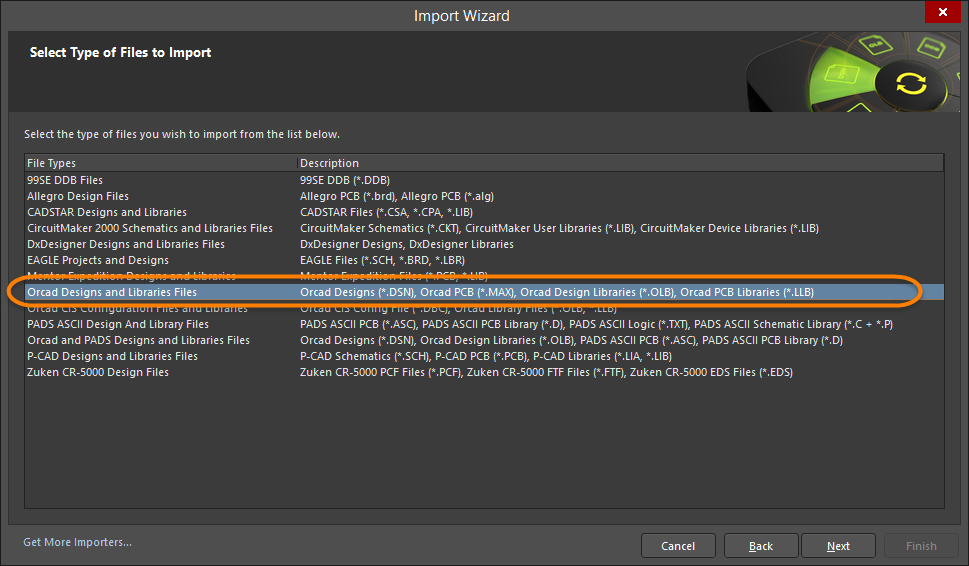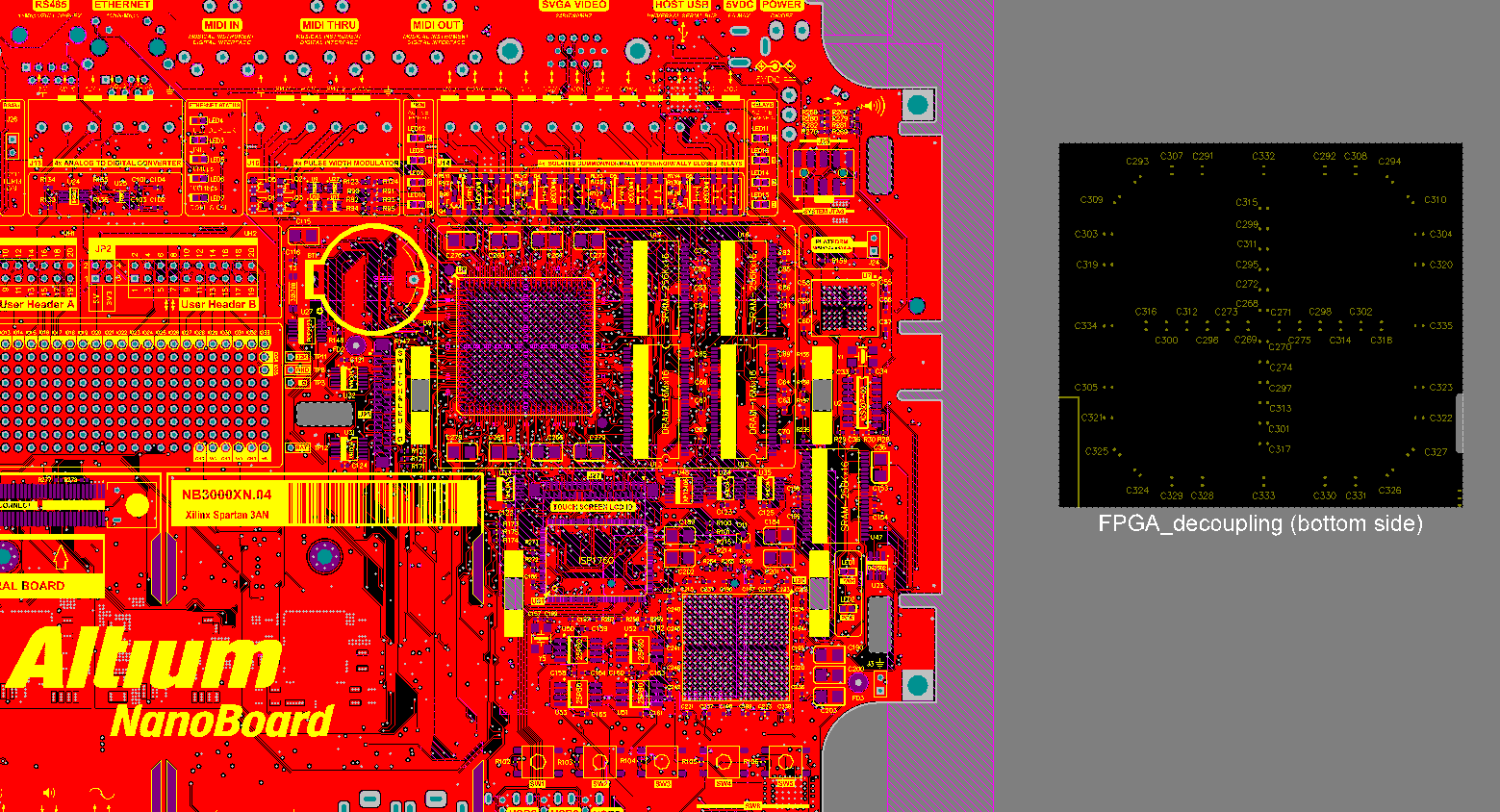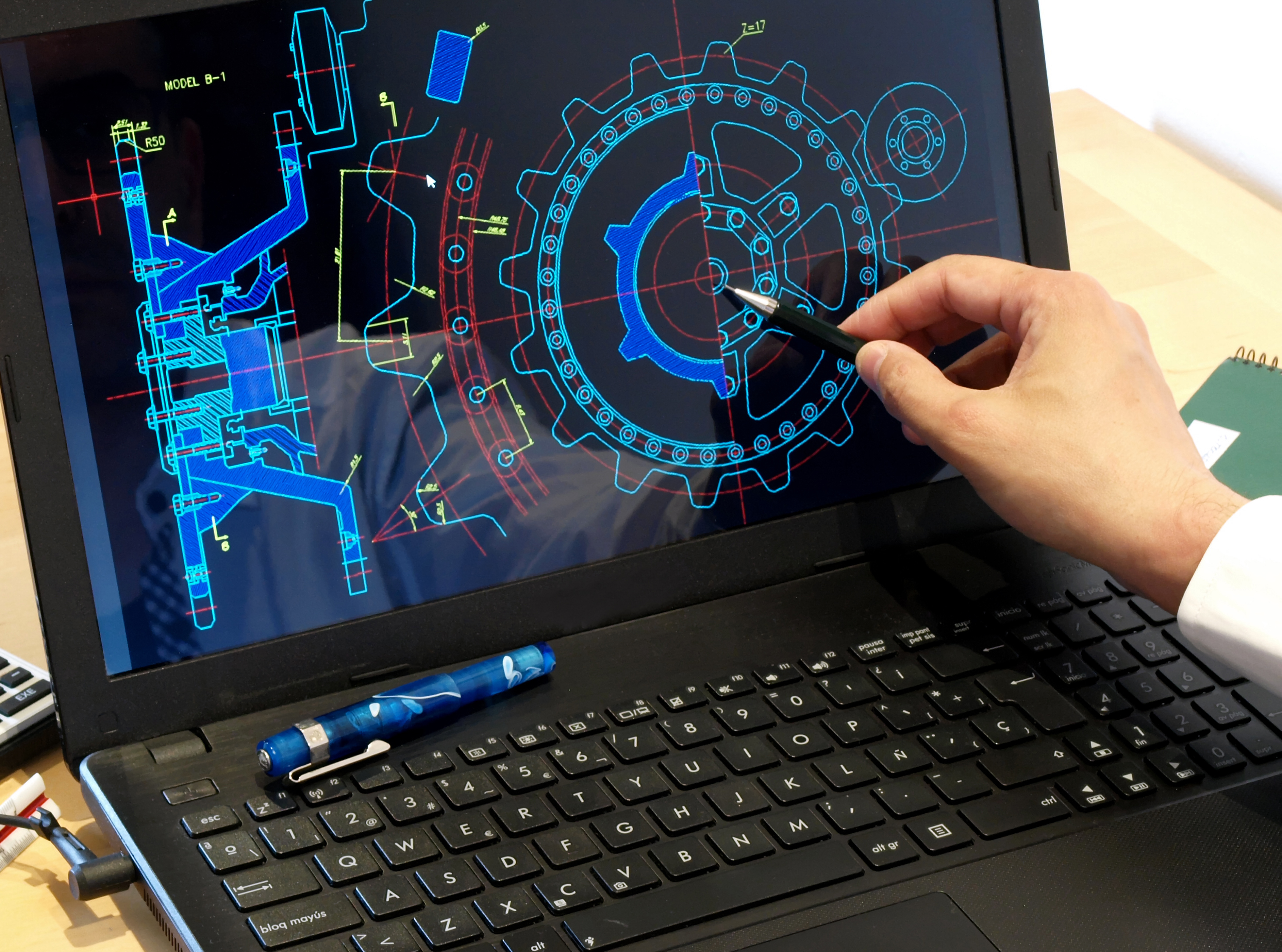Finalized op-amp PCB layout with vias and silkscreen visible. If we want to generate Gerber files for this PCB, we need to add a new OutJob file to the project. From here, you can create a host of deliverables for your PCB, including: Gerber files in RS-274X and X2 formats; Bills of materials in PDF or Excel format; Fabrication drawings. PCB Development Path Each new project includes a new solution, new details, and new compromises to which the engineer MUST pay attention. In order to get the results closer to the ideal, the designer of the future device must make proper calculations, imagine the consequences of decisions made, compare different device configurations and, finally, make the right choice.
- PCB Layout&Design
- Top ten common problems with PCB copy board
- The Difference between Footprints and Land Patterns
- Exclusive Layout Tips for BGA Chips
- Top 10 Best PCB Design Tools
- How to Generate the Gerber Files
- Getting Started with High-Speed PCB Design, Beginners Mus...
- The Best Suited Naming Patterns for PCBs
- How to Export Eagle PCB to Gerber Files
- How to Make Panelized PCB in AlTIum Designer?
- How to Export Altium PCB to Gerber Files
- The Method to Generate Centroid File and BOM from KiCAD
- Half-bridge DC/DC Power Supply Based on LM5036
- How Do We distinguish the DC Resistance and Dynamic Resis...
- The Method to Export KiCAD PCB Design to Gerber Files
- Generating Centroid File and BOM from Altium
- How can Engineers Avoid Inflows During PCB Design
- Signal Reflection in PCBs
- Analyze and Restrict Impedance of High-Speed High Power PCB
- How to Use PCB Layered Stackup to Control EMI Radiation
- Flyback Power Module Circuit Design using ATX Supply

A Basic Guideline from Schematic to PCB Design for Altium Designer

The electronic engineering industry is so vast and rapidly growing that technology is evolving day by day. There are currently numerous open source software or exactly Electronic Design Automation (EDA) or CAD software are available to help designers to design their electronic circuits and lay the PCB design also along with tools available in software to generate files that will be used directly by PCB fabrication house. Among these software, the most popular one is ALTIUM designer. The Altium Designer 18 will be our topic in this article. The Altium Designer gives you a complete platform where you can give your imagination/ideas the shape of reality.
The three main features of Altium designer we will discuss in following sections are 1- Schematic Capture 2- PCB layout 3- Fabrication Output Files
- Schematic Capture
The first step in the process of giving the physical shape or turning the idea into reality is to do manual design or hand sketch on paper. This gives the clear understanding to the designer to know what he is looking for. Now the design on paper will be transferred to CAD software like Altium. This process is called schematic capture. An expert in the software having knowledge in the said software will professionally capture’s the design in schematic window.
File >> New >> Project >> PCB Project then right click on the project to “Add New to Project” >> Schematic
Then you can save your PCB project and schematic file with *.PrjPcb and *.sch extensions respectively. After saving you can now start placement of components from library located on the right most menu. You can add the manufacturer libraries available directly from Altium website. Just download the library zip folder. Unzip it and copy paste the folders inside C:UsersPublicDocumentsAltiumAD18Library this folder. Now find the component in library and place on schematic one by one. Ctrl+R will rotatethe component. Press and hold the right click to “Pan” and Left Ctrl + Right click will zoom in and out.
The top menu shows the wire, GND, library, place port, place text, move, drag and select options.
The left panel shows the project files like schematic Diagram , PCB, Gerber, BOM and other files that are shown as sub-folder files inside the main project. Any changes made in schematic will mark red symbol on the left panel schematic file. After you save changes, the red mark disappears.

Now you interconnect the components using wire or bus option. GND, VCC and other signal ports can be placed accordingly. This will correspondingly generates “NETs”. The NET is the interconnection between two leads/legs of components. The net name shows the details of its connection. You can go to tools >> preference >> Schematics >> General where you can edit and change the properties of existing schematic sheet like snap and visible grids. You can also annotate your components designators by Tools >> Annotation >> Annotate Schematics.You can change the sheet size by Right Panel Properties >>Page Options >> Formatting and Size >> Custom change the values of width and height according to needs. Change orientation to landscape or portrait. You can also switch between the units of measurement mm and mils.
The schematic capture is the basis of the PCB layout coming in next step. Hence schematic capture should be completed free of errors. There should not be any error in the schematic design and it must be cross checked by another verification engineer to evaluate for any faults in the design. Otherwise the wrong schematic will be translated in PCB and will cause PCB to not function as required.
- PCB Layout
Now the next step is the PCB layout step. Right click on Project panel >> Add new to Project >> PCB layout. A black color window will appear. This is the PCB layout documents where you will design PCB layout. Now go to schematic window and do this

Project >> Project options >> Class generation >> Uncheck generate rooms and uncheck electronic component classes. This is done to avoid any unwanted errors in PCB.
Now go to schematic window. Design >> Update PCB Document. This will open the “Engineering Change Order” window. Now click on validate changes and then click execute changes. This will generate green color tick sign on the right of the window. This shows everything is OK. Now go to PCB document and on the bottom right your components are available.
Drag and drop the components one by one on the board. Now to reshape the board go to View >> Board Planning Mode 1. You will see that the board color turns to green from black. Now go to Design >> Redefine Board Shape. Now the green color plus pointer will appear. You can now redefine the boundaries of your PCB board according to you needs. Remember to connect the last final edge with your starting edge/corner to complete the board shape. You can also use edit board shape or modify board shape to change the shape or style of board.
Now go to Design >> Rules. Here you can edit the PCB layout design constraints according to the PCB fabrication house capacity and limits and your design requirements. This is very important because while laying out PCB design i.e. routing, placement of components, holes and vias and other inner and outer layer constraints if seems violating then the Altium will give you error and will not proceed.
The main design rule constraints/clearances need to be taken care of are track to track, track to SMD or THT pad, track to via, track to copper, SMD pad to SMD pad, SMD to THT pad, SMD pad to via, SMD pad to copper, THT pad to THT pad, THT pad to via, THT pad to copper, via to via, via to copper, copper to copper clearances. Moreover routing width maximum, minimum and preferred values are need to be defined. Solder mask and power planes with power pads constraints are also need be defined in design rules. Via diameter maximum, minimum and preferred values can be set in “Routing via Style”
Now go to Design >> Layer Stackup Manager. This will show you the layer stack up details about thickness, material, layer type and name.
Now go to Route >> Auto Route >> All >> Route All. This will help you automatically route your components placed on the PCB according to the rules defined in design rule wizard. The auto routing will save ample time and effort but may not be the good choice when special care is needed for special ICs for EMI and other thermal considerations.
After all things done, go to Tools >> Design Rule Check (DRC). Running the DRC is important as it will identify any violations of design rules
Altium File Types
- Fabrication Output Files:
Nowthat your PCB layout is done, it is time for Gerber and NC drill File generation. These files are called PCB fabrication output files. Go to Files >> Fabrication Output >> Gerber Files. And NC Dill File. Select the appropriate unit and format for your Gerber and check mark the “plot” of corresponding layer you want to create Gerber of. Keep all other parameters same and click OK.
Altium Pcb Layout
For NC (Numeric Controlled) Drill File, check mark the “Generate Separate NC Drill Files for plated and non-plated through holes” and keep all other parameters same and then click OK.
Altium Pcb Design Tutorial
Next Post: A Comprehensive Introduction of Copper Clad Laminate